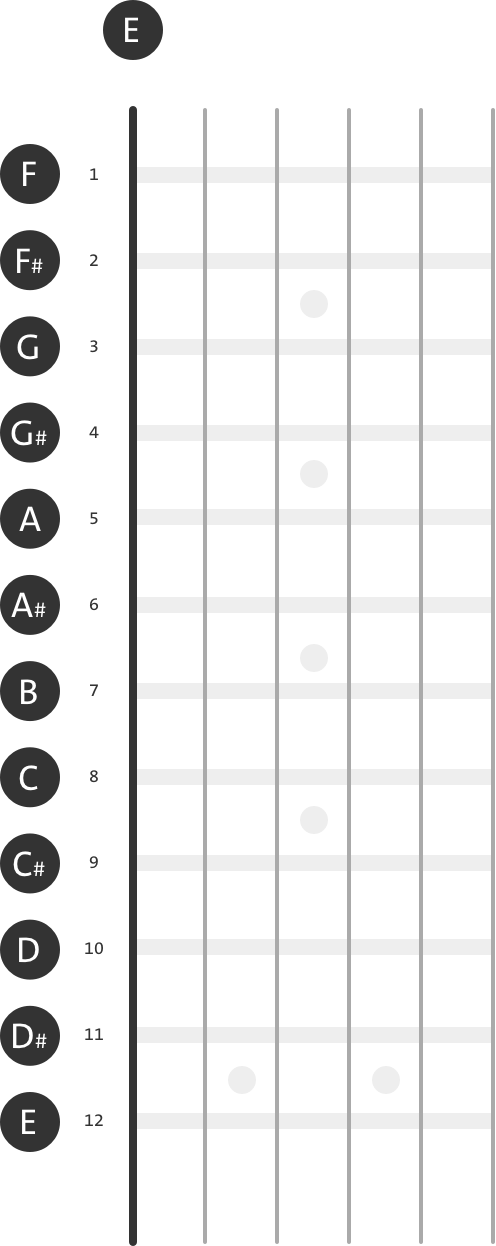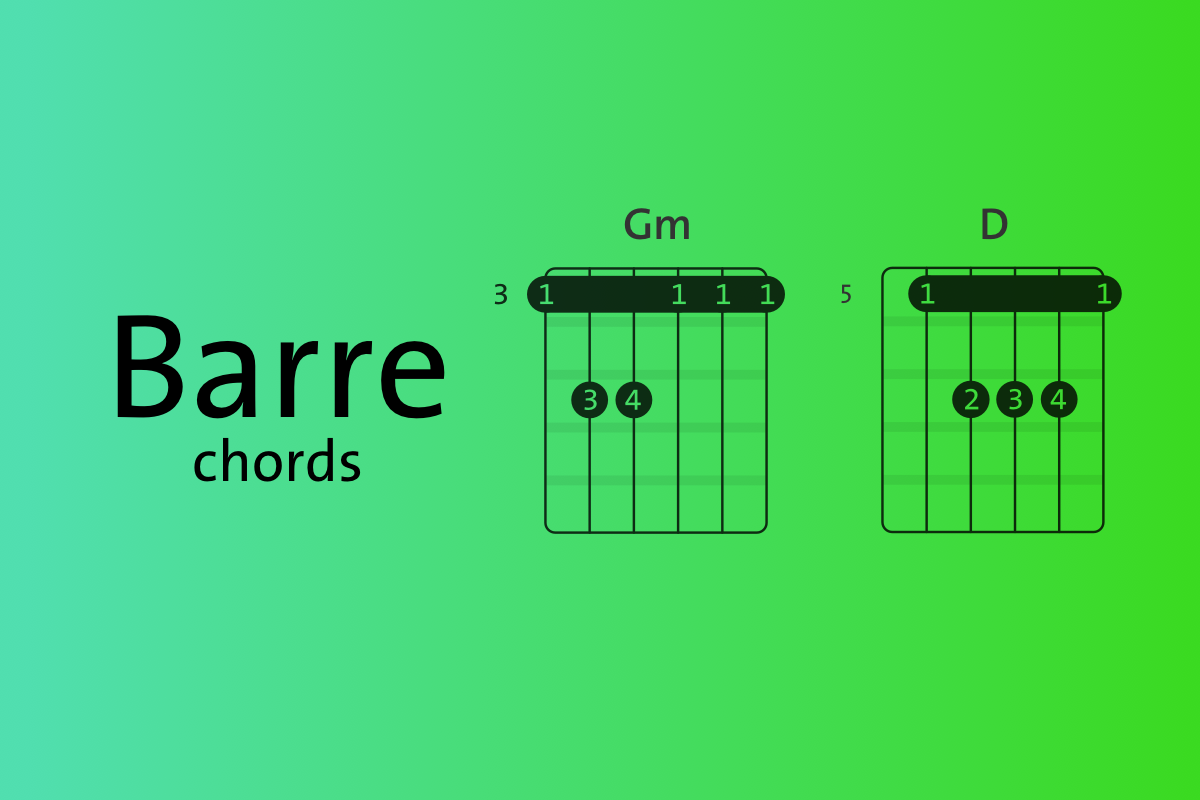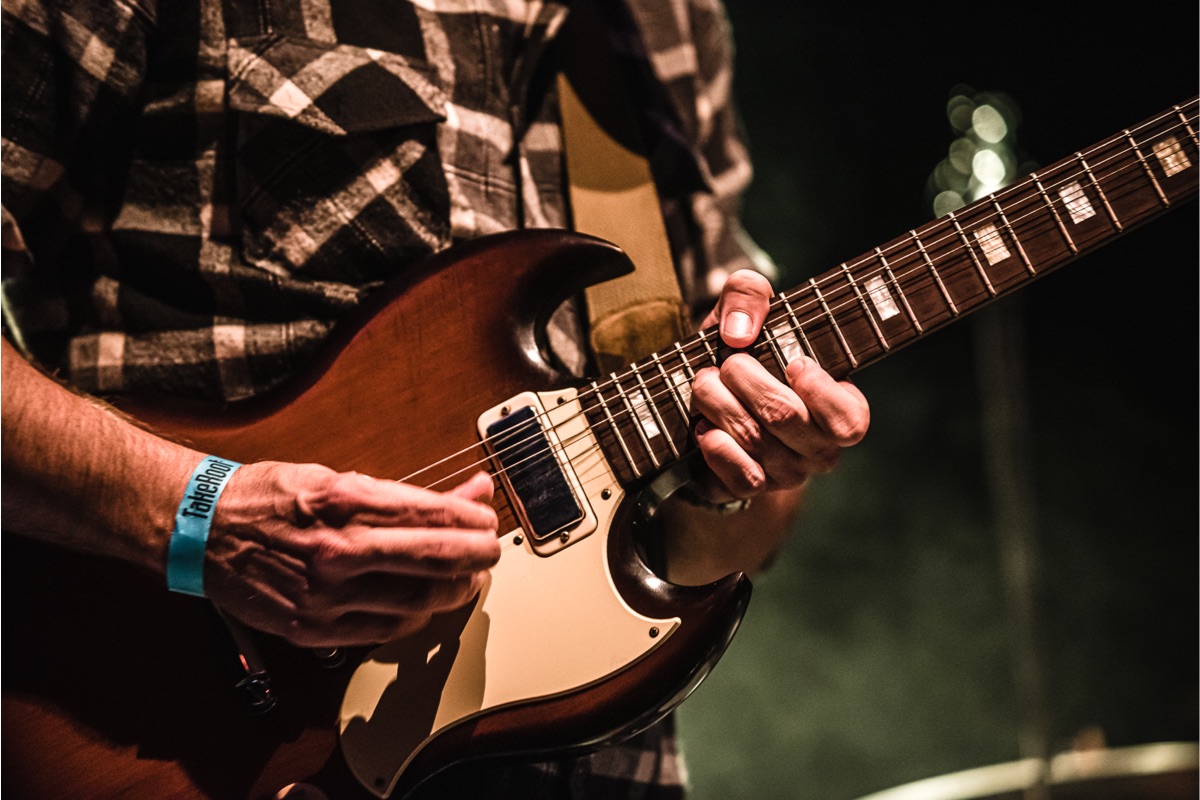We have written lots of blogs about basic chords: Triads you can easily find at the top of the guitar neck. But the fretboard has much more to offer than an Em, A, D and all their friends high up on the axe. Don’t you want to explore the whole range of your instrument? It’s time to learn some barre chords.

In this blog post we will explain how you can unlock the full potential of the fretboard, using the basic knowledge of the E chord. Beware, this could get pretty theoretical and physically painful at times, but it’s definitely going to be worth your while.
All you need to know is E
We’ve explained how to play an E chord before. Just check out this blog post if you forgot. Something kind of tells us you didn’t, so let’s get this party started. Grab your guitar and play an E chord. Try to use the following fingering: ring finger on the second fret of the A string right next to the pinky on the D string, middle finger on the G string first fret. Nothing to it right?
Now prepare for your mind to be blown. Move the fingering of the E chord up a fret – this means your ring finger is on third fret A string next to your pinky on the same fret D string, which logically positions your middle finger on the second fret G string. If you strike this chord it will sound kind of strange and well-harmonized at the same time. Try it.
The ring finger needs more muscles
The chord you’re actually playing is an F major with an E in the bass. Let’s turn it into a full-blown F chord shall we? Place your index finger flat on all the strings first fret. Try to push everything down as hard as you can and then some more – and yes we know this is a painful job if this is your first time playing a barre chord.

Fingering of major chord with root note on the lower E string.
Your main focus for the moment should be that the tone underneath the first fret of the E string sounds bright. Why? Because this is your root note, which means it is very important to hear a clear F when you’re trying to play an F chord.
All the root notes for barre chords on the E string
Now you know how to play an F major, so you probably also know how to play a G, a B or maybe even an C# don’t you? No? Think again… Look at the fingering of your F chord and remember what makes it an F. Yes that’s right, the root note does! What if you use the same fingering on a different root located on the lower E string?

Ah, now you’re starting to get it, aren’t you? It really is that simple. The only thing you have to remember is which tone corresponds to which fret. Luckily, we made a diagram so you can fake it ‘till you make it. Let’s try it out. Which major chord are you playing if you position your fingers starting with your index finger on fifth fret? Okay. And ninth fret?
Practice makes perfect
Congratulations, you have just played the A and the C# barre chords. Kind of feels like amazement and disappointment at the same time, huh? On the one hand you just realized how easy it is to play any major chord using the E string as a root reference. On the other hand… well that spoiled the magic idea of how difficult barre chords actually are.
But the fretboard is far from unlocked. We’re not there yet. This is just a taste of things to come. Next time we will teach you the magic behind the Am, so stay tuned. But until then: happy jamming!

